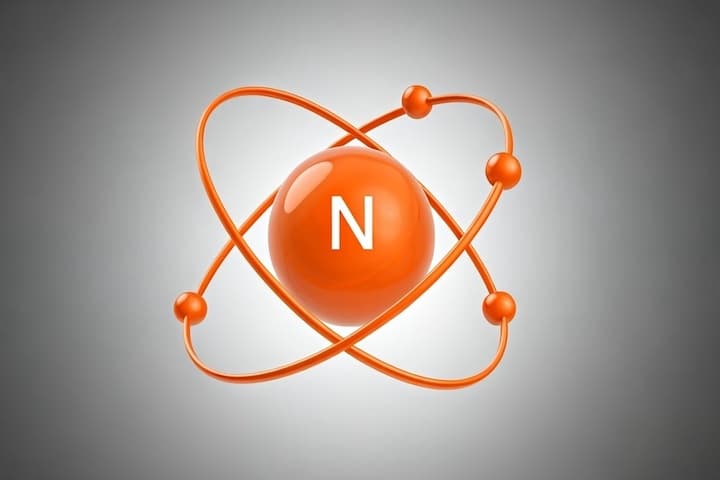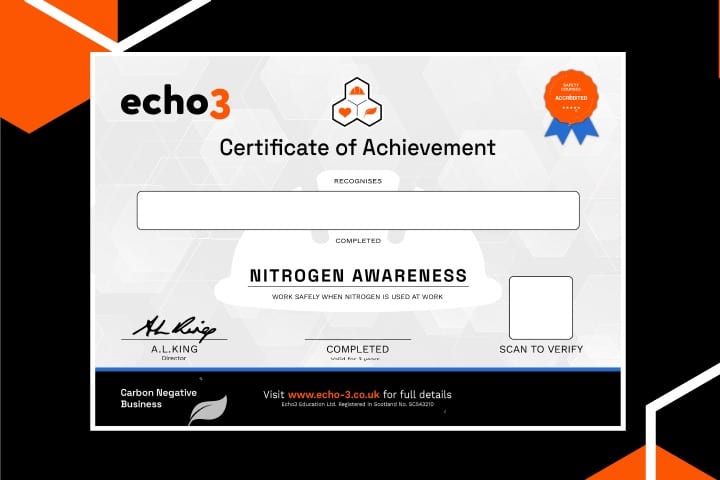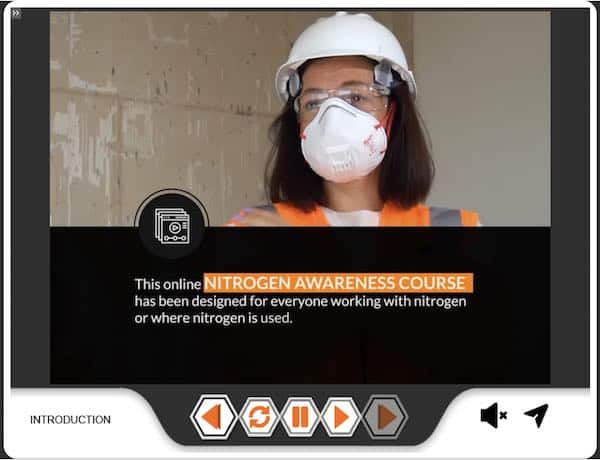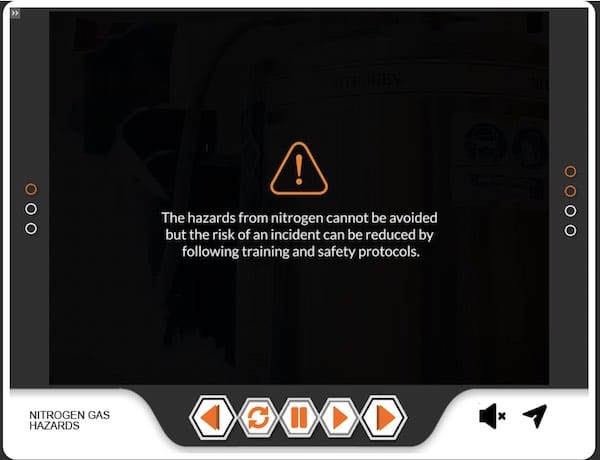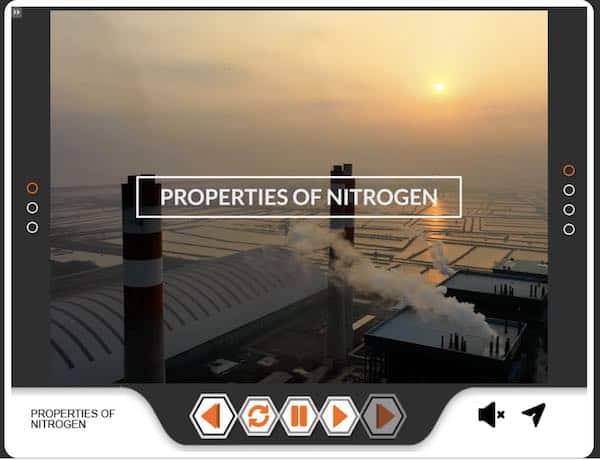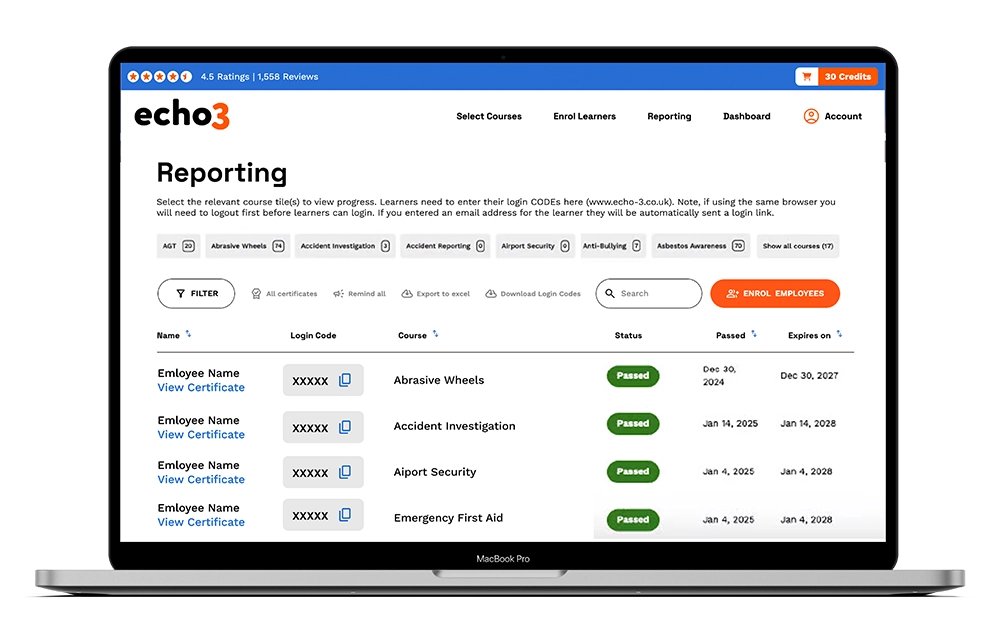Nitrogen Awareness Course
Nitrogen is the most abundant element in Earth’s atmosphere, making up 78% of the air we breathe.
Nitrogen has many industrial uses. For example, purging explosive atmospheres prior to confined space entry. Nitrogen is also used to increase the shelf life of foods.
Nitrogen is a non-toxic gas that is also inert. Meaning it is not flammable. But, working with nitrogen brings hazards. These hazards must be appropriately controlled by employers.
This Nitrogen Awareness course provides learners with the knowledge they need to work safely around Nitrogen.
Upon successful completion a CPD accredited certificate is emailed to the learner and made available to administrators.
Course Content
UNIT 1 | INTRODUCTION TO NITROGEN
In this first unit we introduce you to the uses and potential dangers from Nitrogen. We also cover the laws required to stay compliant while working with Nitrogen.
UNIT 2 | POTENTIAL RISKS FROM NITROGEN
In unit 2 we highlight who may be at risk from Nitrogen and what those risks are.
UNIT 3 | SAFETY CONTROL MEASURES
In this final 3rd unit we detail the control measures for employers and employees to follow that reduce the risk from Nitrogen in the workplace.
UNIT 4 | QUIZ
Nitrogen Awareness Certificate
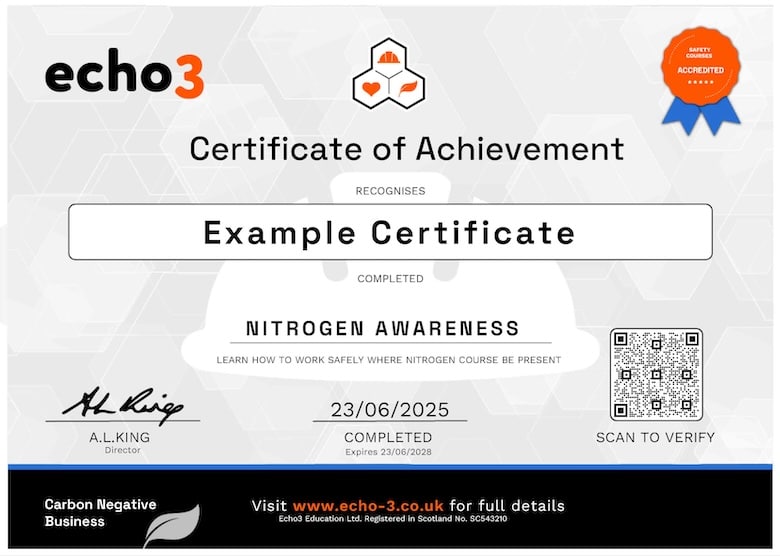
Download and Print Your Certificate
- Written in compliance with the The Control of Substances Hazardous to Health (COSHH) Regulations
- Developed by qualified health and safety professionals Accredited by CPD – learn more about CPD here
- Last Updated February 2024
- To gain the certificate you must complete the assessment which involves 10 questions.
- You can access our LMS any time to reprint certificates, check and set pass marks and act as proof of a commitment to ongoing legal compliance.
- The online Nitrogen Awareness certificate is valid for 3 years.
Course Preview
Echo3 courses include engaging motion-graphic video content, with full english subtitles
Reviews
How to Get Certified in 3 Steps
Individual Learners

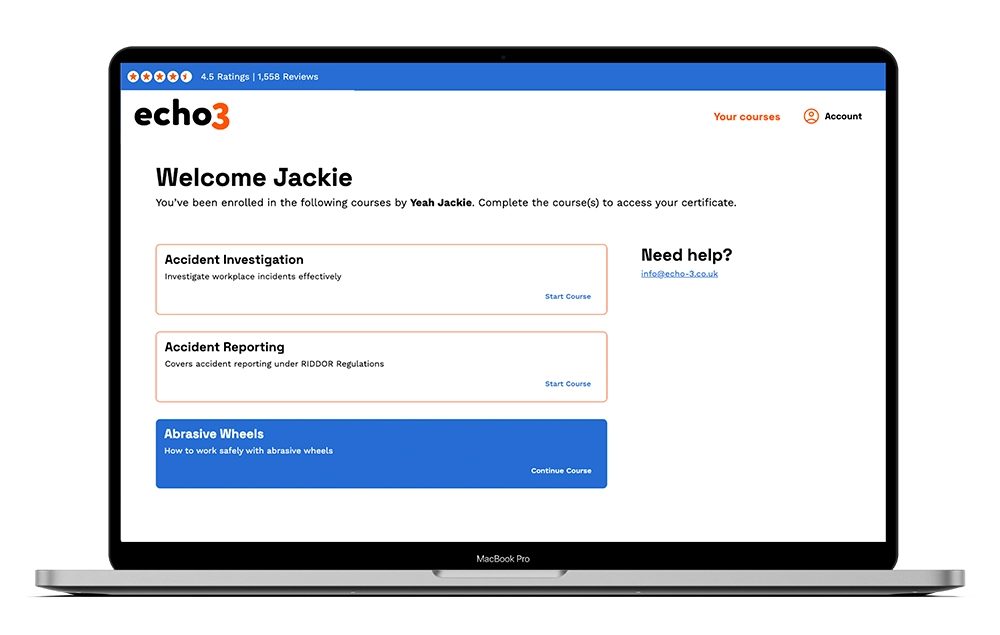
Benefits for Individuals
-
Engaging video-based content
-
Learner dashboard included
-
Instant access after payment
-
Free course retakes
-
Shareable digital certificate
 QR Code Certificate
QR Code Certificate




Bulk Buying Discounts
What are the course objectives?
The objectives of the Echo3 online Nitrogen Awareness course are.
- Understanding Nitrogen: To provide participants with an understanding of nitrogen gas, including its properties, characteristics, and common applications.
- Safety Awareness: To raise awareness about the potential hazards associated with nitrogen gas, including its properties, risks, and safety precautions.
- Control Measures: To teach participants about how to reduce the risk of nitrogen in various workplace settings, such as laboratories, manufacturing facilities, and construction sites.
- Legislation: Familiarise participants with relevant safety regulations.
- Emergency Response: To educate participants about procedures in case of nitrogen-related emergencies.
- Use of Personal Protective Equipment (PPE): Explain the importance of using appropriate PPE.
Who should take this nitrogen awareness course?
This online Nitrogen Awareness course is suitable for.
- Oil & Gas Workers: Welders and professionals involved in metal fabrication may use nitrogen for purging, blanketing, or shielding purposes.
- Healthcare and Laboratory Staff: Those use or handle nitrogen gas or liquid in laboratory experiments and processes should undergo nitrogen safety training.
- Farmers and Agricultural Workers:
- Transportation and Delivery Personnel: Those responsible for transporting nitrogen gas cylinders or containers should receive training on proper transportation and storage procedures to prevent accidents during transit.
- Construction Workers:
- Anyone Working with Nitrogen: Those encounter nitrogen gas in their job, even infrequently, should consider nitrogen safety training to understand the potential hazards and safety measures.
What are the learning outcomes?
By the course’s conclusion, learners will know;
Nitrogen Properties, understanding the physical and chemical properties of nitrogen gas, including its non-toxic but asphyxiant nature and cryogenic characteristics.
Hazard Recognition, identifying potential hazards associated with nitrogen, including oxygen displacement leading to asphyxiation, pressure-related risks, and cryogenic burns.
Safety Regulations, familiarity with relevant safety regulations, standards, and guidelines governing nitrogen gas use in their industry or region.
Safety Equipment, knowledge of safety equipment, including personal protective gear, gas detectors, and emergency response tools.
Risk Mitigation, ability to identify and implement risk mitigation strategies, encompassing engineering and administrative controls.





